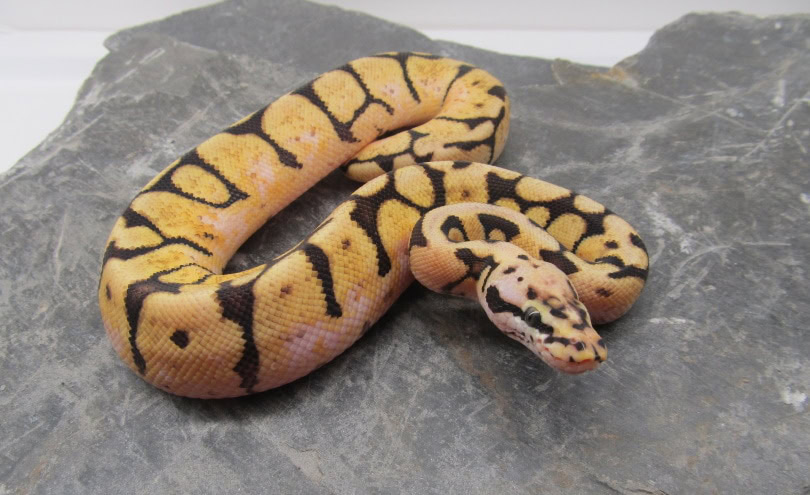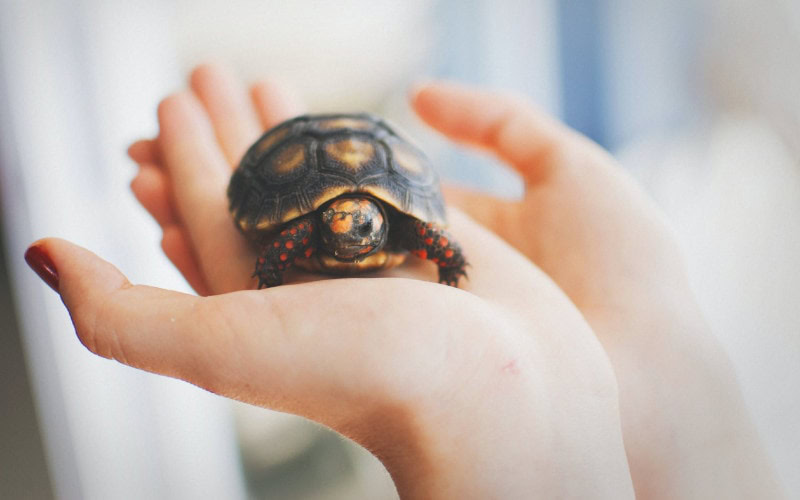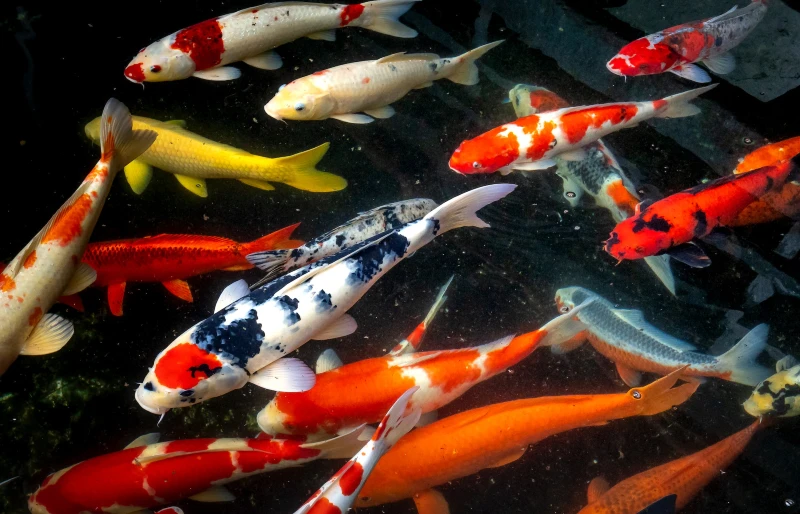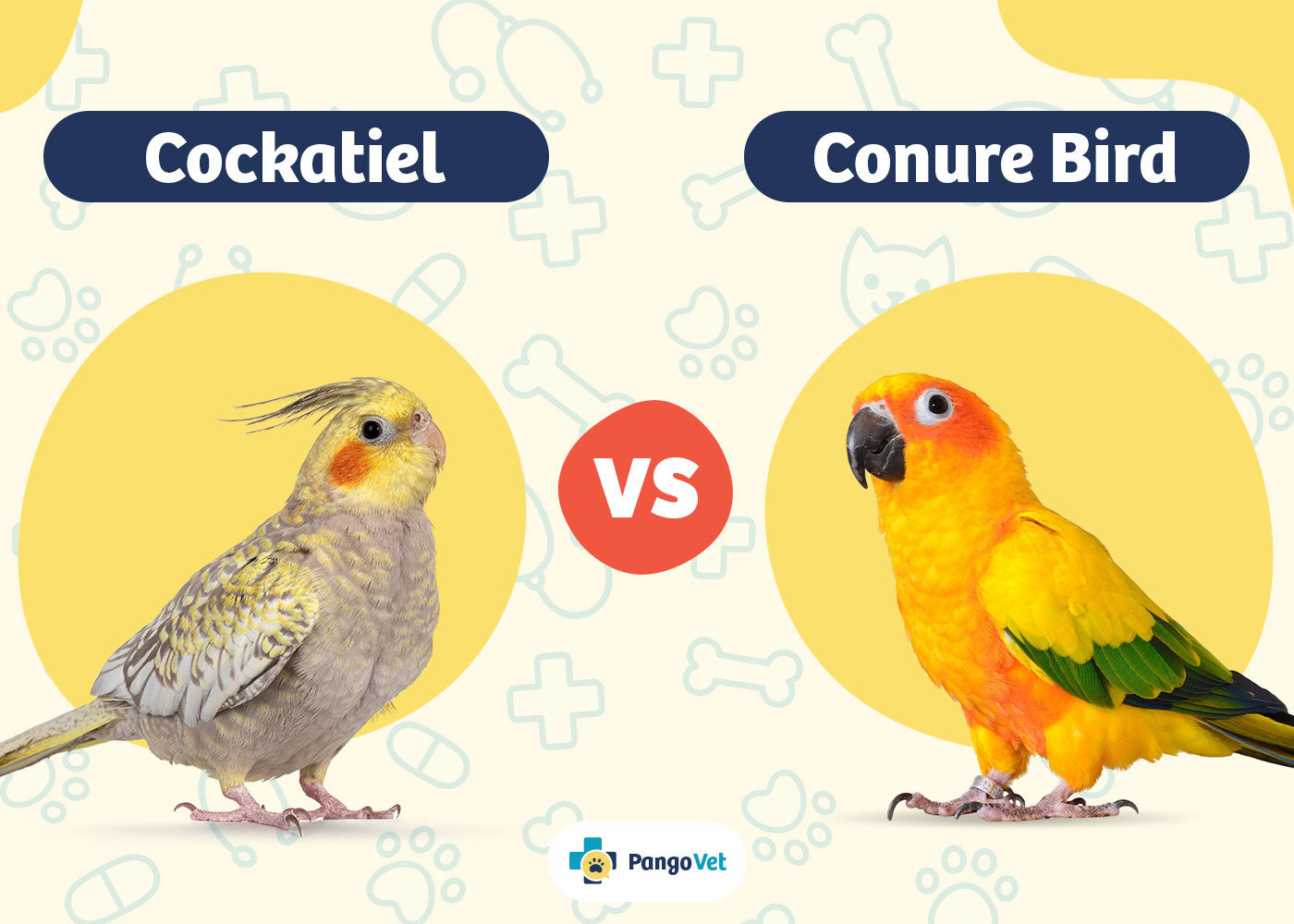A boa constrictor is one of the most popular snake species to be kept as pets. Boas partly owe their popularity to being relatively easy keepers among reptiles, but they can be found in a dazzling array of colors and patterns. Boa morphs are boas with a natural genetic mutation that results in a different skin color or pattern than a standard boa. These snakes can also pass their new genetic makeup on to their offspring. Boa breeders take advantage of this to reproduce morphs and mix and match different genetic mutations, resulting in many visually stunning boas. Here’s a list of many of the different boa morphs and colors available.

The 47 Boa Morphs & Colors
1. Fire
The fire morph is a gorgeous red, beautifully patterned snake. The fire gene is popular with breeders because it enhances any other morph that it is crossed with. Fire morphs are widely used in breeding projects to produce other morphs.
2. Super Fire
Super fire boas are produced when two fire boas are bred together. The super fire boa is an all-white boa with dramatic black eyes and red pupils.
3. Blood
Blood boa morphs originated from a red boa discovered wild in El Salvador. Young blood boas are truly blood red, but they mellow to more of burnt orange with a red background as they age.
4. Aztec
The original Aztec boa morph was discovered living as a classroom pet. Two boa breeders purchased the male boa from the teacher and further developed the morph. Aztec boa morphs are both a color and pattern mutation.
5. Leopard
Leopard boa morphs originated as a mutation of the Sonoran Desert boa. One morph was born in an otherwise normal litter, and a German breeder developed the leopard boa from this original snake. Leopard boas have dark, cryptic, variable patterning.
6. Motley
The Motley boa morph first originated in Colombia and was imported to the U.S. in 1994. These morphs are so named because their patterns resemble that of another type of snake, the motley corn snake. This morph displays beautiful, complex patterning.
7. Eclipse
Eclipse boa morphs are a combination of two different genes, leopard and Colombian motley. Eclipse boas are dark, with dark eyes and a belly that transitions from dark gray to light gray.
8. Jungle
The jungle boa morph was first developed in Sweden from a beautifully patterned snake discovered in a zoo. Jungle boas are known for their high-contrast color and pattern variations.
9. Anery
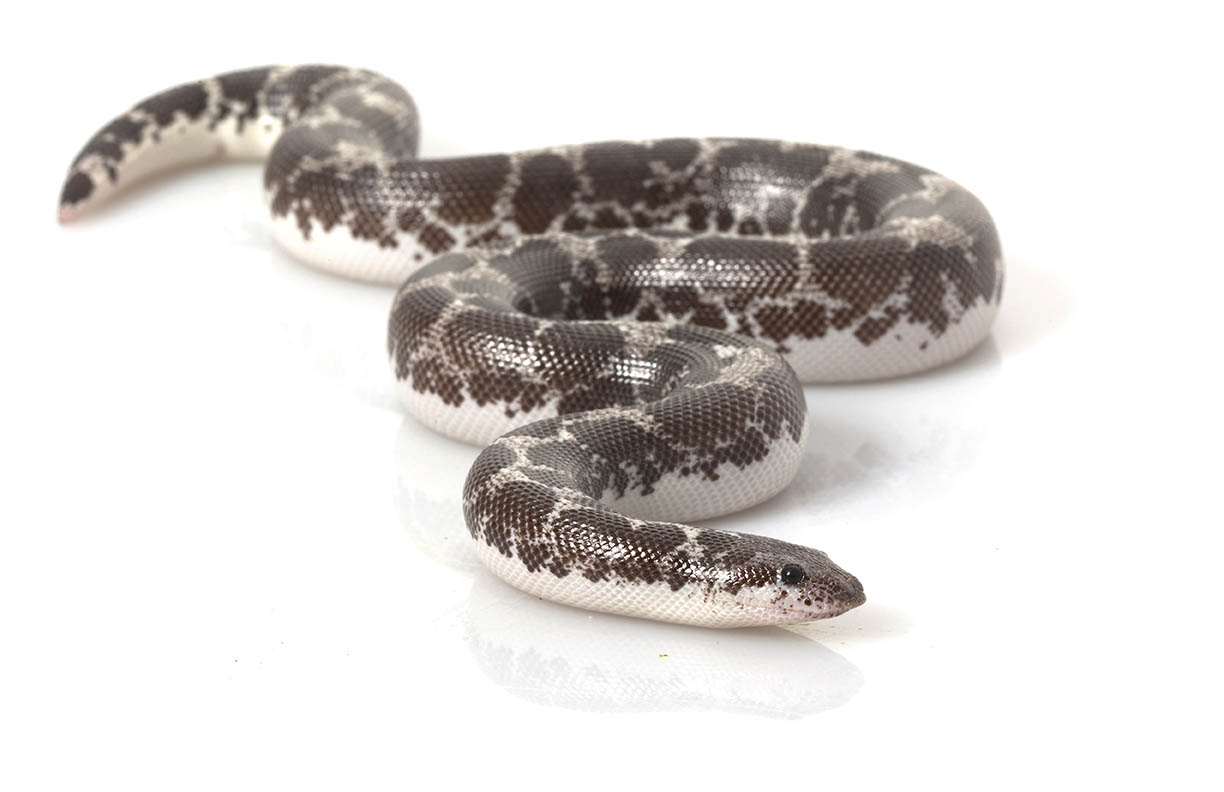
Anerythristic (anery for short) boa morphs are a mutation characterized by their inability to produce red pigment. These boa morphs typically have silver bodies with brown and yellow patterning. Anery genes are used to produce numerous other color morphs.
10. Albino
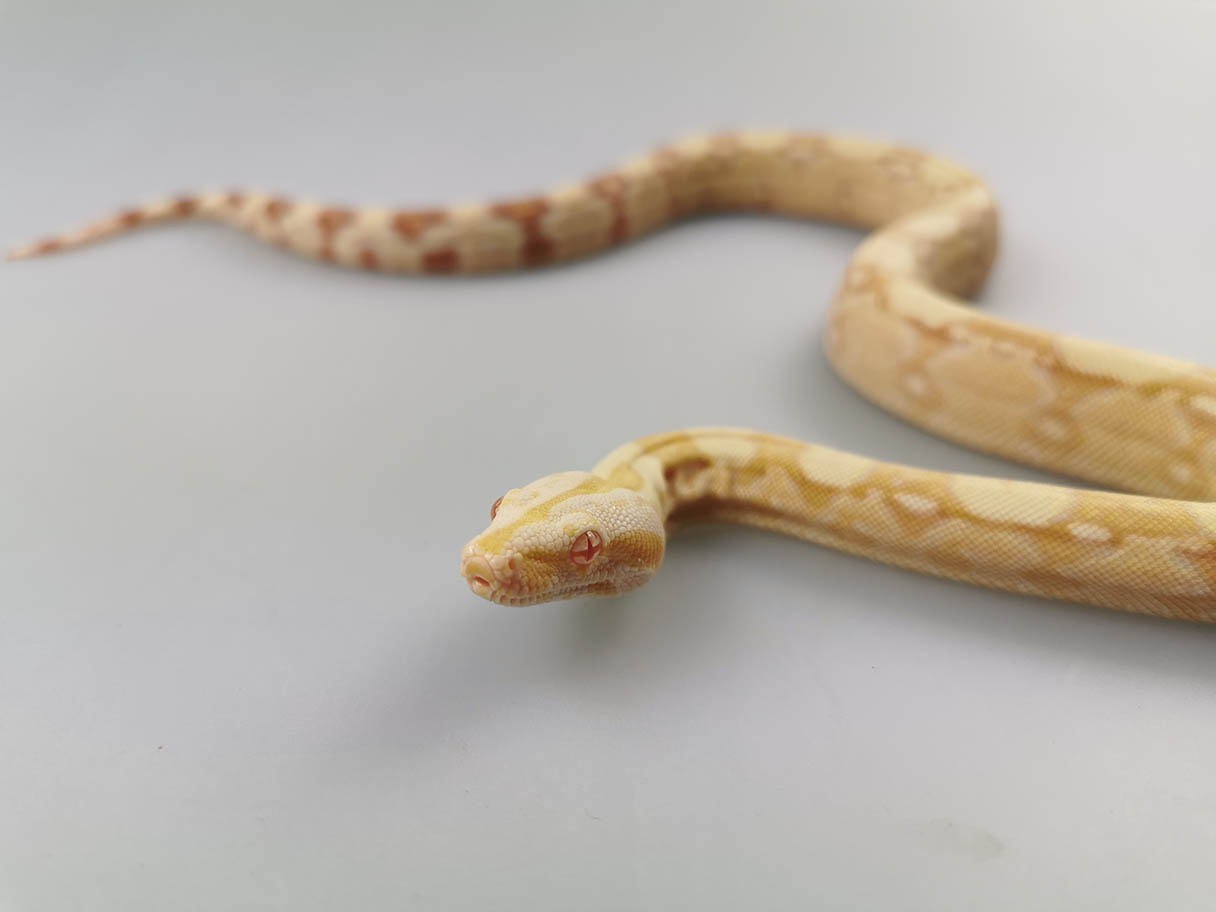
Albino boa morphs lack dark pigment or melanin. There are two separate strains of albino morphs, sharp and kahl. Both were developed from albinos caught wild in Colombia and imported to the U.S.
11. Hypo
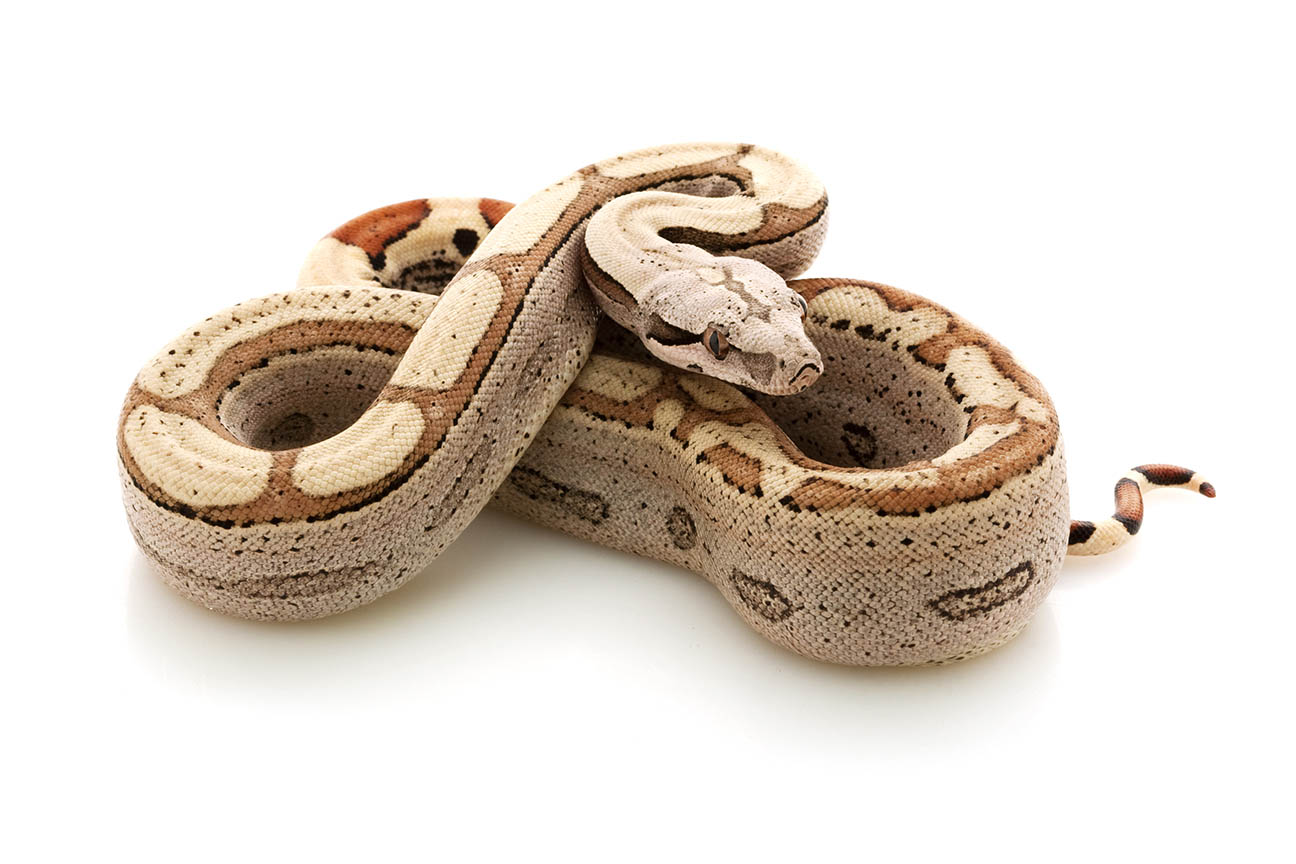
Hypomelanistic (hypo for short) boa morphs have reduced amounts of black pigment. This gene mutation also makes other colors sharper and more brilliant. Due to this, hypo genes are widely used to create and enhance other morphs. Hypo boa morphs are divided into two breeding lines, salmon and orangetail.
12. Ghost
Ghost boa morphs were developed by combining the anery and hypo genes. They have beautiful pink, gray, white, and lilac coloring.
13. Albino Jungle
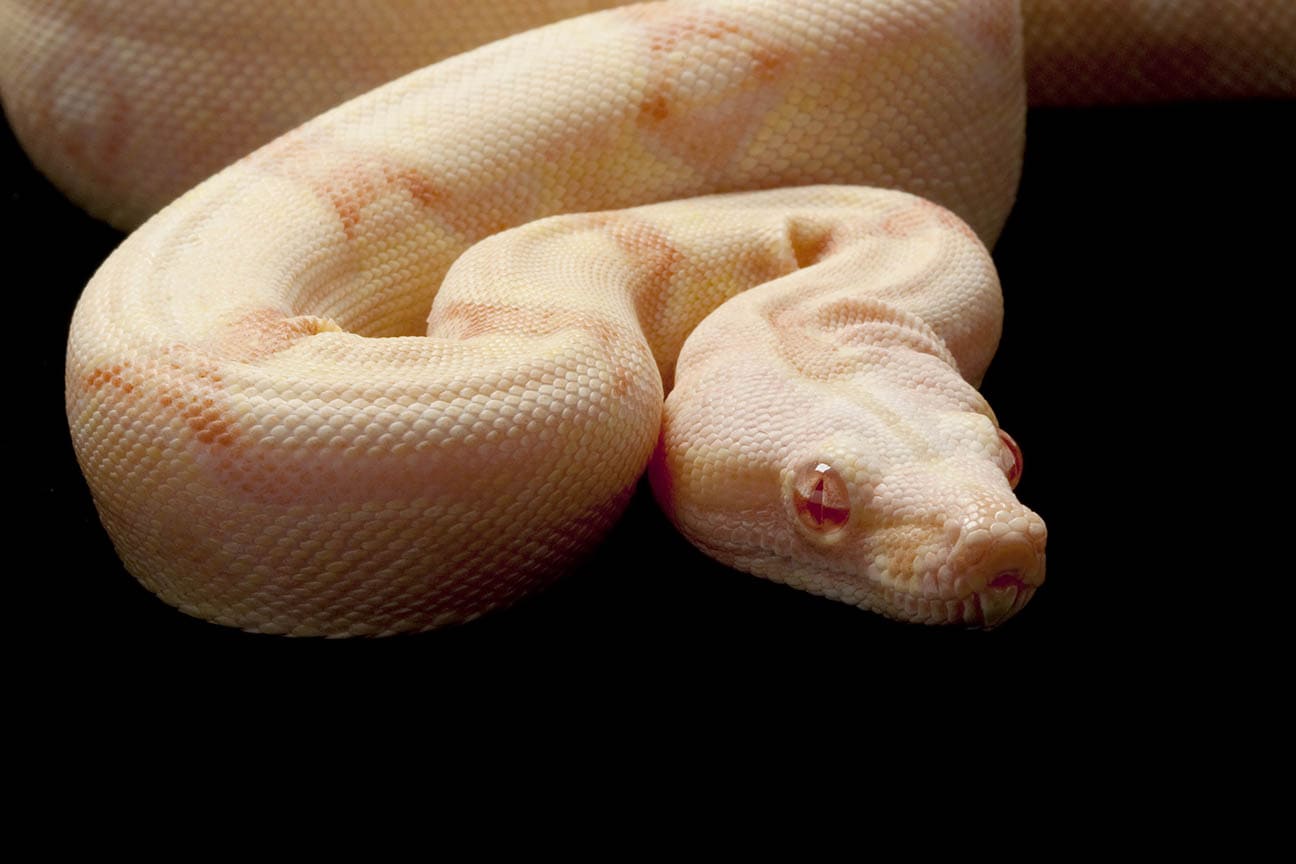
The Albino Jungle morph was created by combining the kahl albino gene with the jungle gene. The resulting morph is high contrast, has a vibrant color and pattern, and lacks dark pigment.
14. Boa Woman Caramel
Boa woman caramel boa morphs were first discovered and developed by a pioneering boa breeder named Sharon Moore in 1986. The first caramel boa was born into an otherwise normal litter, and Sharon further developed the morph from that original snake. These morphs are a beautiful caramel color with sharp patterning.
15. Paradigm
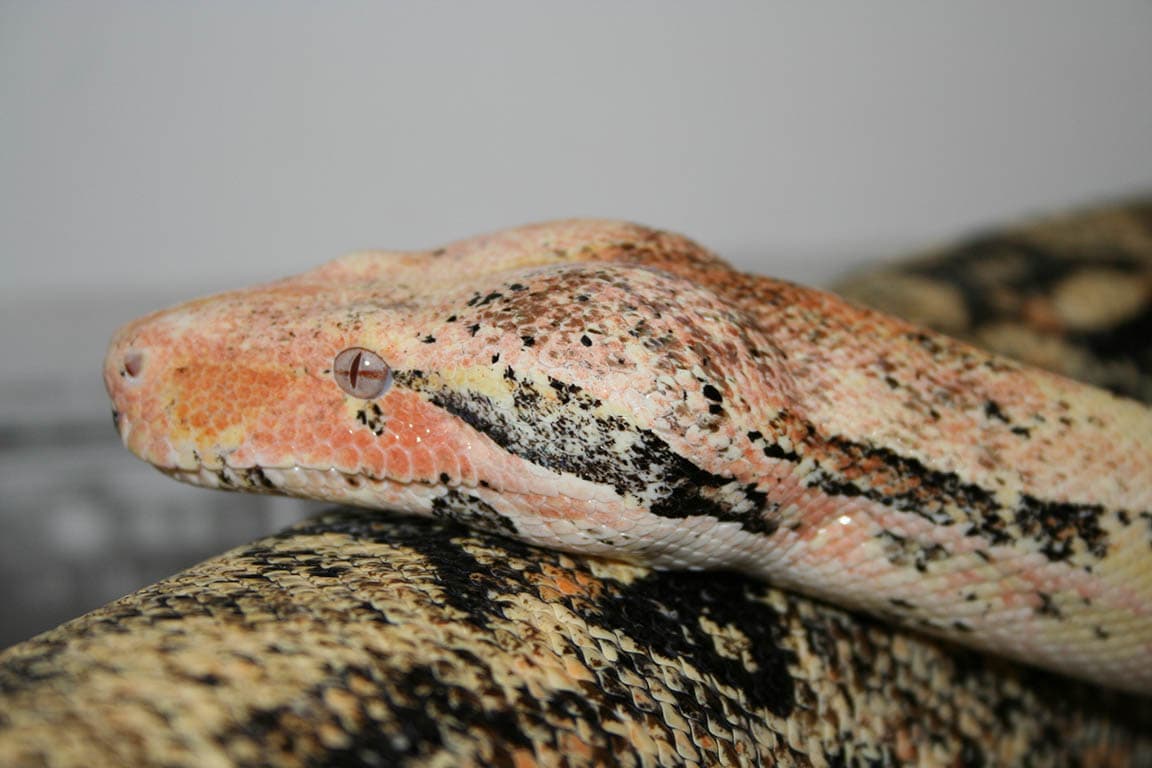
Paradigm boa morphs were created by combining the boa woman caramel gene with the sharp albino gene. These boa morphs lack dark pigment, resulting in a stunning caramel-colored boa with light pattern markings.
16. Snow
Snow boa morphs result from a breeding sequence involving anery and sharp albino genes. These two genes together produce normal-looking babies, but when those babies are then bred together, snow boa morphs may be produced.
17. Snowglow
Snowglow boa morphs are created by combining sharp albino, anery, and hypo genes. The resulting morph is a light-colored, visually stunning snake.
18. Sunglow
Sunglow boa morphs are a combination of albino and hypo genes. The two genes together produce a snake colored like an albino but with less patterning and a more intense color. Sunglows are often used to produce even more interesting morphs.
19. Arabesque

The Arabesque morph was first discovered in 1989 and developed further in 1993. This morph has increased dark pigment, resulting in high-contrast dark markings on a light cocoa body.
20. IMG
IMG stands for increased melanism gene, meaning these boas morphs are born looking similar to normal boas but with more dark pigment. As they age, IMG boa morphs darken until they are almost solid black. These morphs are also known as the Azabache boa, from a Spanish word meaning “jet black.”
21. Pastel
Pastel boa morphs have a reduced amount of dark pigment. This makes the other colors present more prominent, making the pastel a popular choice for breeders looking to create colorful morphs.
22. Sterling
Sterling boa morphs are distinguished by their lack of patterns. They have no markings at all, making them unique among boa morphs. Sterling boa coloring typically ranges from light brown to dark brown/gold.
23. VPI
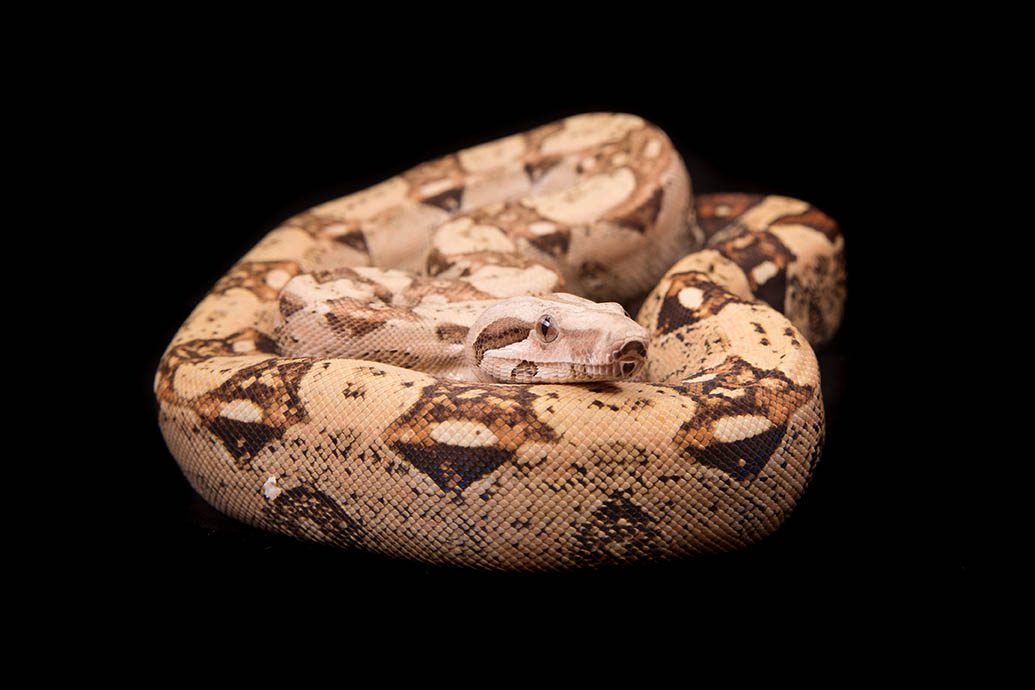
The VPI, or VPI T+, boa morph is an albino boa that can produce brown, red, and gray pigment. This morph is popular for its striking appearance and is also used to produce a wide variety of other morphs.
24. IMG Ghost
The IMG ghost boa morph results from combining the IMG and the ghost genes. This mixture of genes creates a snake with sharp, highly contrasting colors.
25. Reverse Stripe
The reverse stripe pattern morph was first discovered in a wild Central American boa. These morphs show a lack of patterning along their back except for one stripe down each side.
26. Sunburst Arabesque
The sunburst Arabesque boa morph was created by combining the Arabesque boa with a sunburst Colombian boa. This morph displays the patterning of the Arabesque boa with added pink, gold, and orange hues.
27. Albino Leopard
The albino leopard morph comes from combining albino and leopard genes. This combination often results in snakes with lighter-than-desirable colors, though breeders are attempting to correct this. The main draw of the albino leopard is the ability to combine it with other morphs to produce even more spectacular colors and patterns.
28. Hypo Leopard
Crossing hypo and leopard genes produces a morph with a lot of variety in color and pattern. Hypo genes enhance the natural orange and pink color in usually dark leopard boas. Producing this morph takes several specific rounds of breeding, but the results are often quite spectacular.
29. Key West
The Key West boa morph has a lot of variety in its appearance. Their patterns are fairly normal, but they do tend to be colorful, making them popular for breeding with other morphs.
30. Key West Motley
Key West motley morphs are created by combining Key West and motley genes. This morph results in some interesting pattern variation and strong colors.
31. Red Dragon
This amazing morph is made by combining albino and blood genes. The resulting snake displays an intense red color.
32. Sunglow Leopard
The sunglow leopard morph is created by combining hypo, albino, and leopard genes. This morph varies widely in appearance, with a brighter coloring than the albino leopard morph.
33. Arctic Glow
The Arctic glow boa morph, also called the anery paraglow, is a combination of anery, hypo, and paradigm genes.
34. Keltic
The keltic boa morph is a newer pattern morph discovered in Europe. It is similar to the Arabesque morph.
35. Moonglow
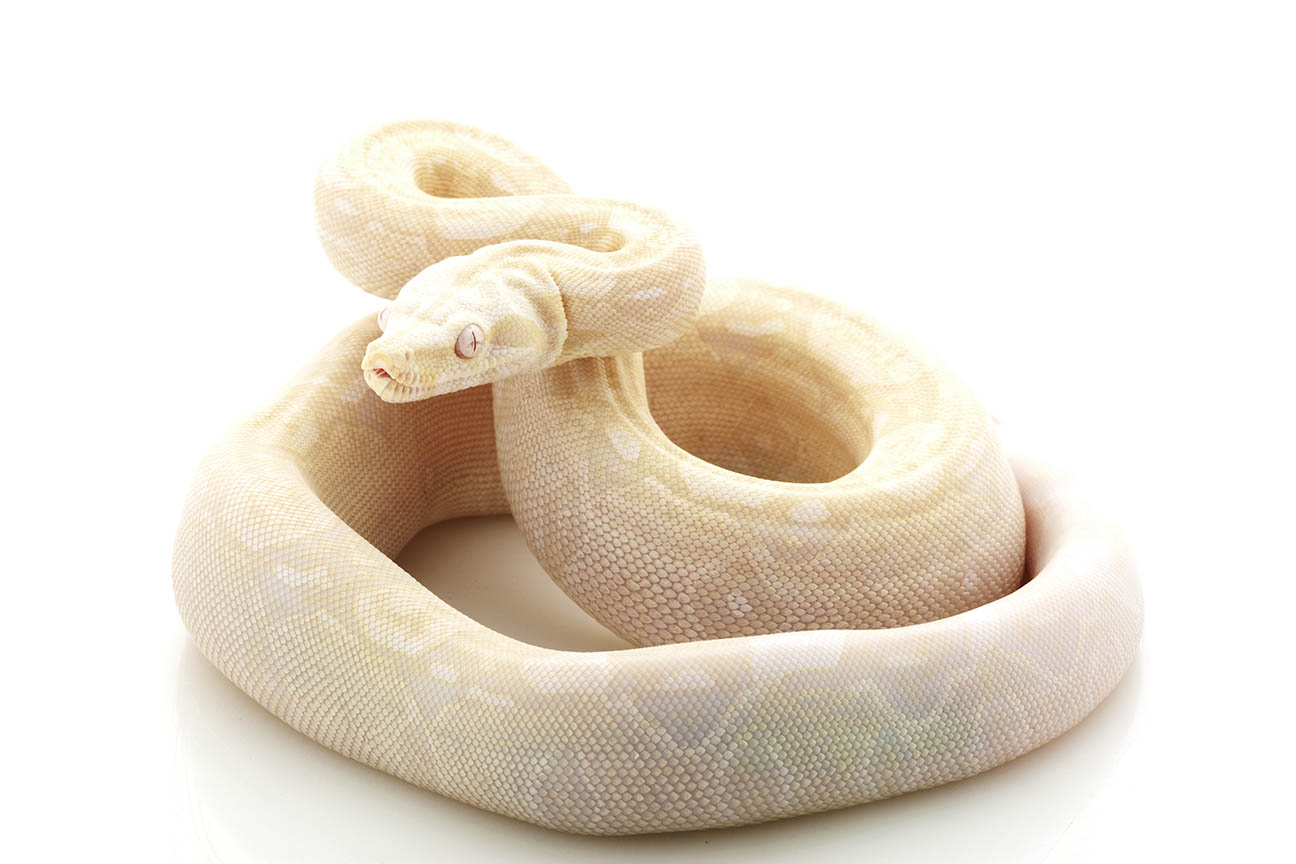
The moonglow boa morph is similar to the snowglow. However, moonglow boas are created by combining anery and hypo genes with the kahl albino strain rather than the sharp.
36. Sharp Sunglow
The sharp sunglow boa morph is a combination of hypo and sharp strain albino genes. The two albino strains are genetically incompatible, hence the distinction in this sunglow morph.
37. Ghost Jungle
The ghost jungle morph is created by crossing a ghost boa with jungle genes.
38. Junglow
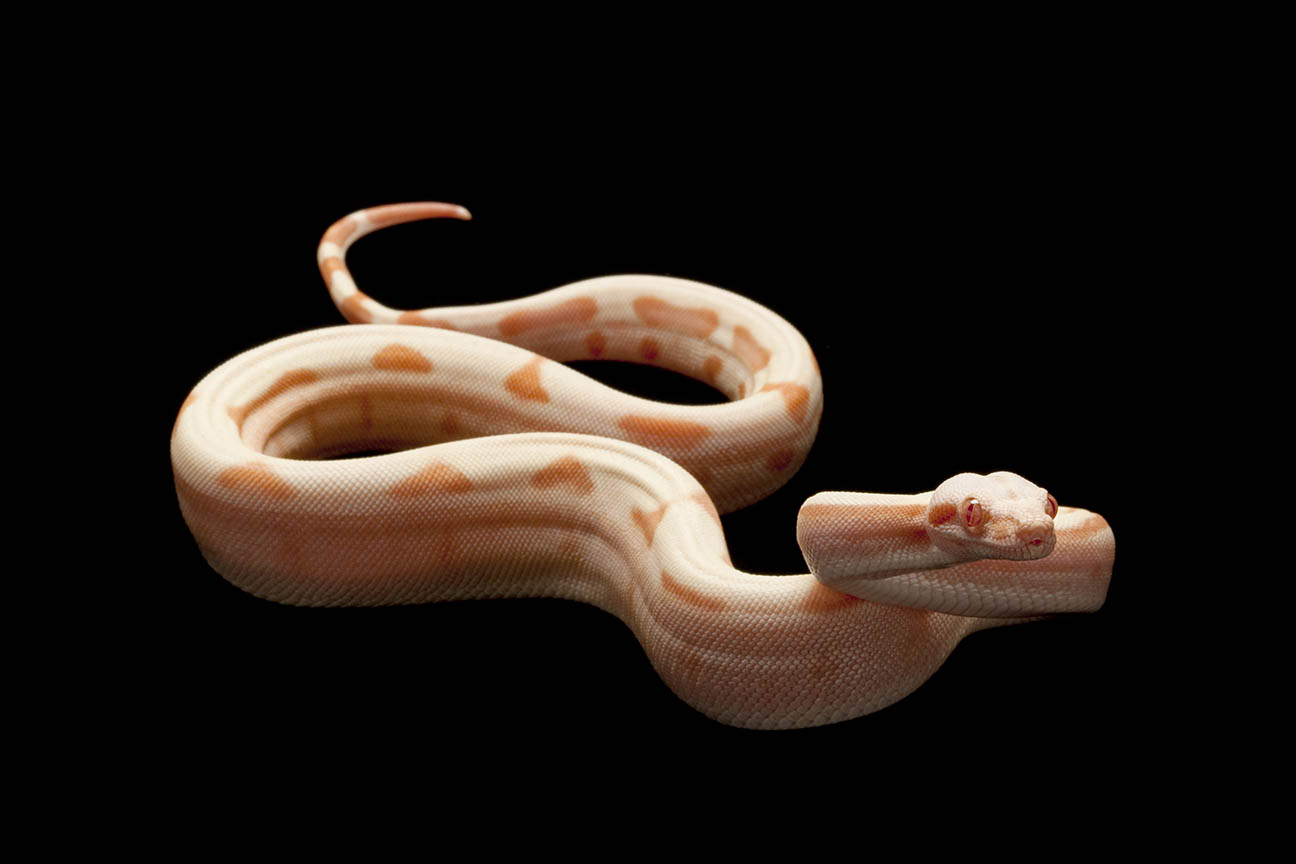
The junglow (sunglow jungle) boa morph results from combining albino, hypo, and jungle genes. The junglow morph is similar in appearance to a sunglow but with more intense coloring.
39. Salmon Jungle
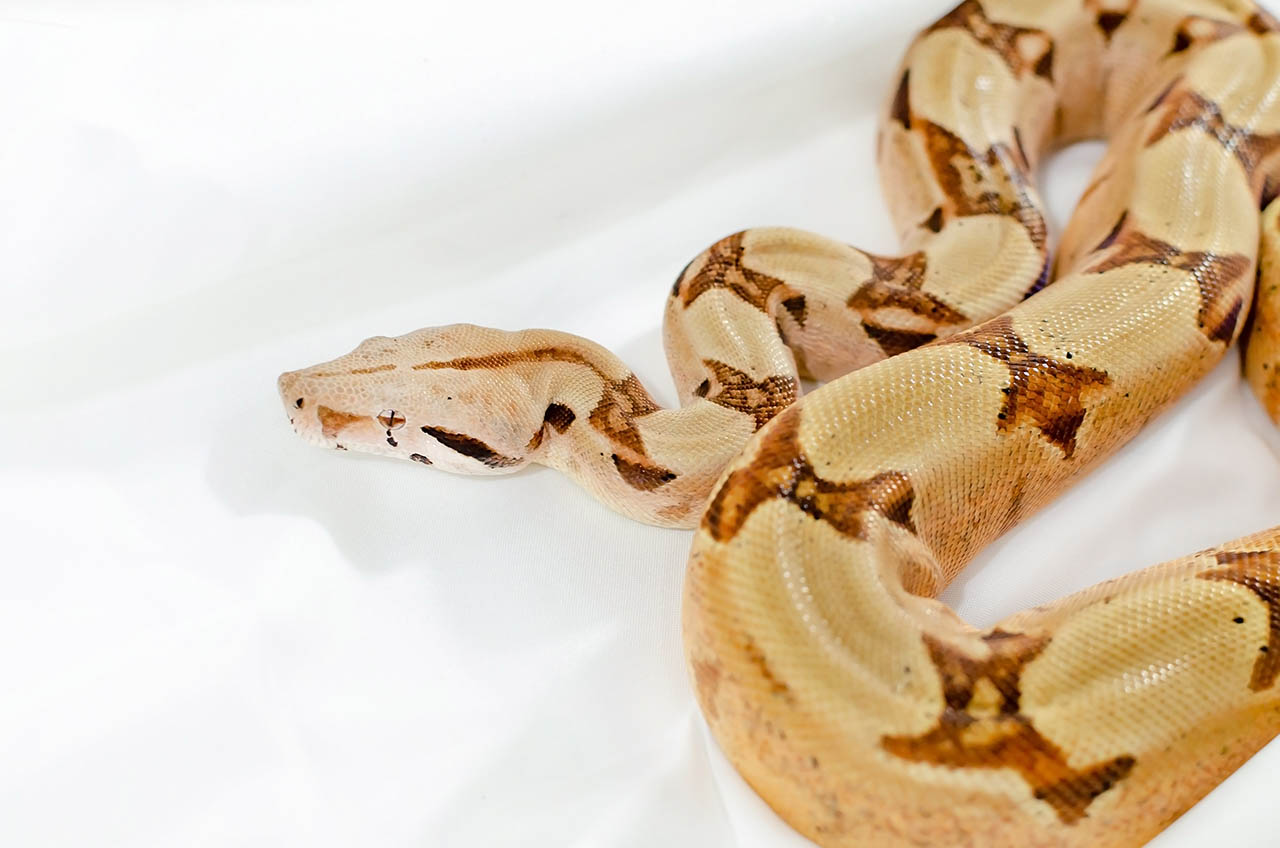
Salmon jungle boa morphs are created by combining jungle genes with the salmon hypo strain. Salmon hypos have much more pink coloring than other hypo morphs, giving this morph a unique overall hue.
40. Nicaraguan T+ Albino

This boa morph, nicknamed the Nic T+, is a color morph with no black pigment. These snakes display deep red, orange, and pink colors with lavender-bordered tail markings.
41. Super Jungle
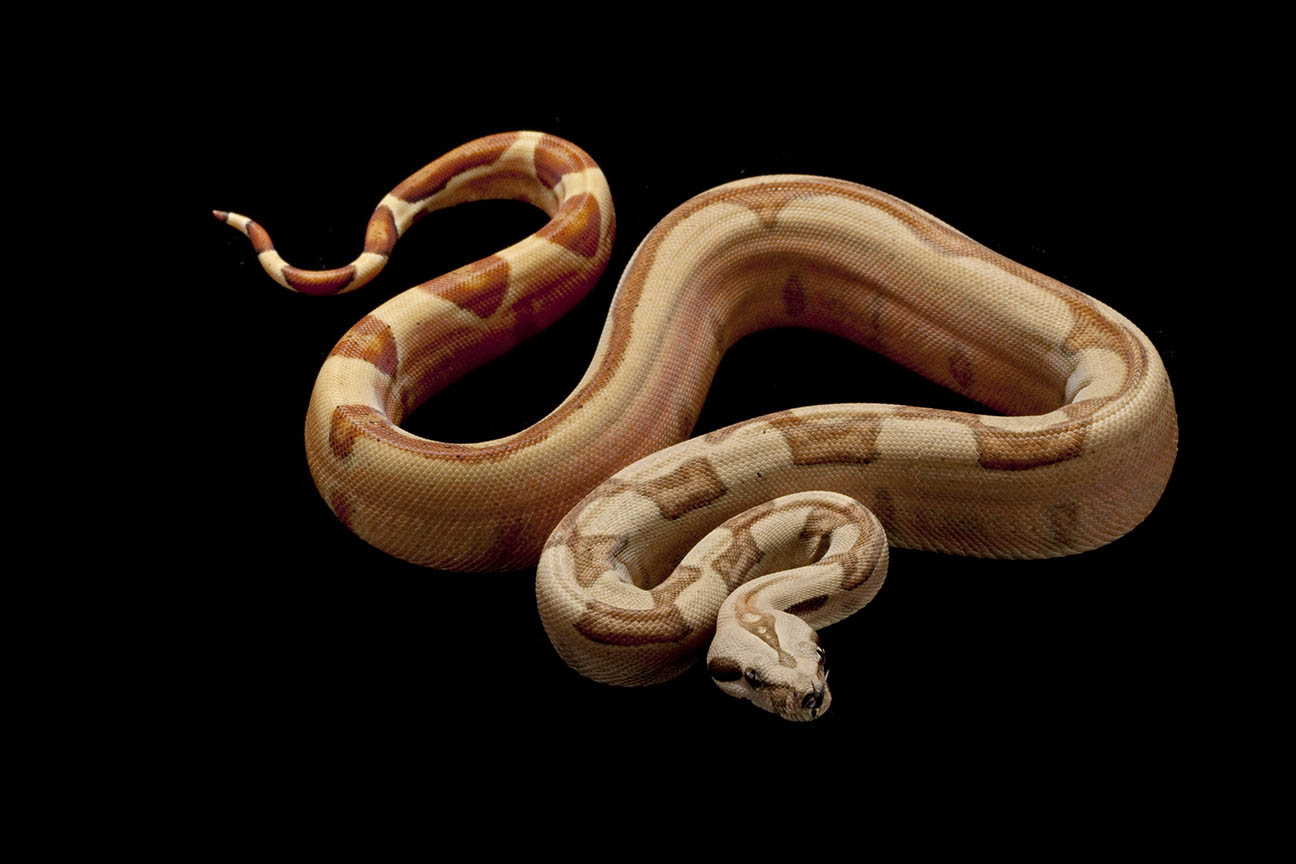
Super jungle morphs come from breeding two jungle boas together. The resulting morph is known to have genetic issues, though, and adults are usually infertile.
42. Super Stripe
The super stripe boa morph is a pattern morph first discovered in Central America. This boa is characterized by three cream-colored stripes stretching from head to tail.
43. Motley Arabesque
The motley Arabesque morph combines the motley and Arabesque genes. This morph is often combined further with other morphs, such as hypo.
44. Jungle Blood
Jungle blood boa morphs are created by combining jungle and blood genes. The jungle gene gives these morphs variable patterns, while the blood gene provides an overall orange and red color pigment.
45. Albino Motley
The albino motley morph results from combining the albino and motley genes. These snakes lack dark pigment like an albino. Their back pattern is striped or square, and they have stripes on their sides instead of a normal diamond pattern.
46. Anery Jungle
The anery jungle boa morph is created by combining anery and jungle genes. These snakes have the variable patterning of a jungle morph and the coloring of the anery.
47. Sunset Blood
The sunset blood morph is a pale orange boa morph produced by carefully selective breeding. In this case, the blood gene and the salmon hypo gene were used, as well as a pale Hog Island boa. This unique morph also has black eyes and a pink tongue.

Things to Consider When Buying a Boa Morph
Now that you have seen that boas come in so many gorgeous colors and patterns, maybe you’re ready to take the next step and get one of your own. How should you prepare before getting a boa, though, and where can you buy one?
First, make sure you are ready for a long-term commitment. Boas have a life expectancy of 20–30 years! Get familiar with the type of shelter, food, and daily care that these snakes require. They are fairly low-maintenance reptiles, but it’s still a good idea to know what you are getting into. Remember that snakes are often sold as babies, so make sure you know how large your adult boa constrictor will be, and prepare accordingly.
Also, the best choice when purchasing a boa constrictor is to buy a captive-bred boa from a reputable breeder. Wild-caught snakes are more prone to stress and disease and may be hard to tame. Reputable snake breeders handle their snakes early and often, so they become used to human interaction.
One last thing to keep in mind before buying a boa is cost, especially if you are interested in one of the morphs on this list. Morphs vary widely in price, but in general, they are more expensive than normal boa constrictors.

Final Thoughts
If you like boa constrictors and are interested in their morphs, you can find reputable breeders in several ways. Your local exotic veterinarian may be familiar with a good one. Another option is to find local or online groups of boa enthusiasts and ask for recommendations. You may have no choice other than to buy a boa from an online source, but you should try to stick to breeders with positive reviews and health guarantees. No matter where you acquire your new pet, it’s a good idea to take it to the veterinarian for a check-up as soon as possible.
- Related Read: Dumeril’s Boa
Featured Image Credit: tousaujardin, Pixabay
Contents
- The 47 Boa Morphs & Colors
- 1. Fire
- 2. Super Fire
- 3. Blood
- 4. Aztec
- 5. Leopard
- 6. Motley
- 7. Eclipse
- 8. Jungle
- 9. Anery
- 10. Albino
- 11. Hypo
- 12. Ghost
- 13. Albino Jungle
- 14. Boa Woman Caramel
- 15. Paradigm
- 16. Snow
- 17. Snowglow
- 18. Sunglow
- 19. Arabesque
- 20. IMG
- 21. Pastel
- 22. Sterling
- 23. VPI
- 24. IMG Ghost
- 25. Reverse Stripe
- 26. Sunburst Arabesque
- 27. Albino Leopard
- 28. Hypo Leopard
- 29. Key West
- 30. Key West Motley
- 31. Red Dragon
- 32. Sunglow Leopard
- 33. Arctic Glow
- 34. Keltic
- 35. Moonglow
- 36. Sharp Sunglow
- 37. Ghost Jungle
- 38. Junglow
- 39. Salmon Jungle
- 40. Nicaraguan T+ Albino
- 41. Super Jungle
- 42. Super Stripe
- 43. Motley Arabesque
- 44. Jungle Blood
- 45. Albino Motley
- 46. Anery Jungle
- 47. Sunset Blood
- Things to Consider When Buying a Boa Morph
- Final Thoughts
